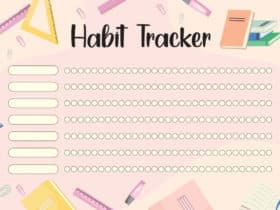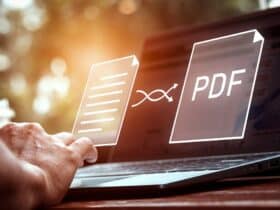In the age of technology, with so much of our lives digitized, it’s common to find our old paper-based belongings relegated to storage boxes or bookshelves, gathering dust. Among these could be an old journal filled with thoughts, experiences, and memories. Just like vintage photographs, these journals serve as a tangible link to our past. But paper deteriorates with time, and the delicate process of aging might endanger these treasured documents. This brings us to the topic of this article: how can we preserve these old journals? The answer lies in digitization, a process that not only protects but enhances accessibility and usability of these precious chronicles of our past, and in this article we will be trying to find the best way to digitize an old journal.

Benefits of Digitizing Old Journals
Digitizing old journals breathes new life into them and offers a multitude of benefits, from accessibility and longevity to searchability.
Accessibility: In our interconnected world, having access to our personal histories at the click of a button is a privilege we should not ignore. Digitizing journals allows us to carry these personal histories with us wherever we go. This enables us to share our experiences and thoughts with others easily and conveniently.
Longevity and Preservation: Paper is a delicate material. It’s susceptible to physical damage such as tears and spills, and with time, it naturally deteriorates. Digitization prevents these problems, preserving the journal’s content for generations to come.
Searchability: This is perhaps one of the most practical benefits of digitization. A digital copy of a journal can be easily searched for specific keywords or phrases. This is especially useful for large journals or if you have a collection of them.

Essential Tools for Digitizing Journals
When preparing to digitize an old journal, several tools are indispensable. These include a scanner or a smartphone with a high-quality camera, an OCR (Optical Character Recognition) software, and a reliable digital storage system.
A High-quality Scanner or Smartphone Camera: Depending on the number of pages and the level of detail, you can either use a high-quality flatbed scanner or a smartphone with a high-resolution camera. Both these tools have their pros and cons, which will be discussed further in the next section.
OCR (Optical Character Recognition) Software: OCR is a technology used to convert different types of documents, including scanned paper documents, into editable and searchable data. This technology is critical in digitizing old journals as it allows the transformation of static images of text into searchable, digital text.
Cloud Storage or Digital Archival System: Once your journal is digitized, it’s vital to have a secure place to store it. There are several cloud storage options available such as Google Drive, Dropbox, and OneDrive. Alternatively, you can store the digital journal on your local hard drive, but remember to keep a backup.

Step-by-Step Process to Digitize an Old Journal
The process of digitization may seem daunting, but with the right tools and steps, it can be easily accomplished.
Preparing Your Journal for Scanning: Start by cleaning your journal. Use a soft brush to remove any dust or dirt on the pages. If there are any loose pages, make sure they’re secured so they won’t be lost or missed during scanning.
Choosing the Right Scanning Tool: If you’re scanning a few pages, a smartphone camera can suffice. There are several apps available like Adobe Scan, Microsoft Office Lens, and CamScanner that can help. However, if the journal is extensive or the pages are fragile, a flatbed scanner would be more suitable.
The Scanning Process: Scan the pages in order, ensuring all the details are captured. Most scanners allow you to preview the scanned image; use this feature to check the quality before saving.
Using OCR Software for Text Recognition: Once all pages are scanned, use OCR software to convert the images into digital text. Some popular options include Adobe Acrobat Pro and ABBYY FineReader.
Quality Checks and Corrections: Check the text recognized by the OCR software. There might be some mistakes due to the software misinterpreting some of the handwriting or fonts. Correct these manually.
Organizing and Storing Your Digital Journal: Finally, organize your digital journal. You might create a PDF document or a Word document, depending on your preference. Remember to back up your digitized journal.
Choosing the Platforms Which Offer the Best Way to Digitize an old Journal
There are numerous platforms where you can store and share your digital journal. The ideal platform for you depends on your specific needs.
Google Drive: Google Drive provides 15 GB of free storage and allows easy sharing. It also allows you to open and view most document types directly in the browser.
Dropbox: Dropbox provides 2 GB of free storage. However, it has a robust sharing system, allowing you to control who can view and edit your files.
OneDrive: OneDrive provides 5 GB of free storage and is integrated seamlessly with Windows 10 and Microsoft Office, making it a good choice for those who use these services extensively.
Additional Tips to Maintain and Preserve Original Journals
While digitization can protect the content of your journal, it’s still important to preserve the original physical journal.
Proper Storage Practices: Store your journal in a cool, dry place out of direct sunlight. Use acid-free boxes for storage to prevent damage from acid migration.
Restoration Tips for Damaged Journals: If your journal is damaged, consider seeking professional help for restoration. Do not attempt to restore damaged pages with regular tape, as this could cause further damage.
Conclusion
Preserving our past is a task worth undertaking. Digitizing your old journals allows you to carry your history with you, keeping it safe and accessible for generations to come. The process might seem daunting at first glance, but with the right tools and steps, it can be a rewarding journey. Start today, and bring your past to the digital present.


















